|
TRANSLATE THIS ARTICLE
Integral World: Exploring Theories of Everything
An independent forum for a critical discussion of the integral philosophy of Ken Wilber
 David Christopher Lane, Ph.D.
Professor of Philosophy, Mt. San Antonio College Lecturer in Religious Studies, California State University, Long Beach Author of Exposing Cults: When the Skeptical Mind Confronts the Mystical (New York and London: Garland Publishers, 1994) and The Radhasoami Tradition: A Critical History of Guru Succession (New York and London: Garland Publishers, 1992). David Christopher Lane, Ph.D.
Professor of Philosophy, Mt. San Antonio College Lecturer in Religious Studies, California State University, Long Beach Author of Exposing Cults: When the Skeptical Mind Confronts the Mystical (New York and London: Garland Publishers, 1994) and The Radhasoami Tradition: A Critical History of Guru Succession (New York and London: Garland Publishers, 1992).
THE STUDY OF CONSCIOUSNESS
Glimpses into the Life and Work of Great Thinkers in Neuroscience and Philosophy
Chalmers |
Changeux |
Chomsky |
Churchland, Paul |
Churchland, Patricia |
Crick |
Dennett |
Edelman |
Flanagan |
Humphrey |
Huxley |
Koch |
Leary |
Lilly |
McKenna |
Nagel |
Tononi
DAVID JOHN CHALMERSDiana HernandezOne of the world's pre-eminent philosophers of mind and language, best known for breathing new life into the enigma of human consciousness, is Australian cognitive scientist David John Chalmers. Born on April 20th, 1966 in the Emerald City (Sydney), he experienced synesthesia (music produced strong color sensations in his mind) as a young boy. During his youth, he performed exceptionally well in math and attained a bronze medal in the International Mathematical Olympiad. Chalmers received an undergraduate degree in pure mathematics from the University of Adelaide. He continued his education at the University of Oxford where he was awarded a Rhodes Scholarship. He later received his Ph.D. in cognitive science and philosophy from Indiana University at Bloomington. David Chalmers Chalmers established his name after presenting a lecture at the inaugural Toward a Science of Consciousness conference in 1994. An article in the Chronicle of Higher Education claims that it “established [him] as a thinker to be reckoned with and a goosed a nascent field into greater prominence.” His first professorship landed him at the University of California Santa Cruz where he published the widely regarded book The Conscious Mind (1996). Chalmers later was appointed Professor of Philosophy (1999-2004) and Director of the Center for Consciousness Studies (2002-2004) at the University of Arizona. He later returned to Australia where he was named Honorary Professor of Philosophy at the Australian National University. He is also associated with New York University and currently serves as their Professor of Philosophy and Neural Science. He is co-founder and past president of the Association for the Scientific Study of Consciousness and co-director of the Phil Papers Foundation. In 2013, he was elected a Fellow of the American Academy of Art and Sciences. Today, he works as an editor on topics related to the philosophy of mind for the Stanford Encyclopedia of Philosophy. Chalmers is famous for formulating the hard problem of consciousness, which he first referenced it in his landmark paper “Facing Up to the Problem of Consciousness” (1995) and later in his earliest book The Conscious Mind. The hard problem asks the question: how can the mechanisms of the brain--neurons and synapses--produce self-reflective consciousness? A distinction is made between the easy (cognitive) problems of consciousness and the hard (phenomenal) problem of consciousness. The easy problems of consciousness include, but are not limited to, explaining the ability to integrate information, focus attention and report mental states. These issues are considered relatively easy because they can be solved by specifying a mechanism that can perform the task. Despite how poorly understood or complex an easy problem may be, it can ultimately be explained by relying entirely on standard scientific methodologies. Chalmers believes that the problem of experience is apart from this series and will persist “even when the performance of all relevant functions is explained.” The fundamental difference between the easy problems and the hard problem is that the former is—theoretically—answerable through physicalism, the dominant approach in the philosophy of mind. In his notable 1995 paper, Chalmers stated “The really hard problem of consciousness is the problem of experience. When we think and perceive, there is a whirl of information-processing, but there is also a subjective aspect.” During a 2017 interview with ABC's Daniel Keane, Chalmers remarked “It is widely agreed that experience arises from a physical basis, but we have no good explanation of why and how it so arises. Why should physical processing give rise to a rich inner life at all? It seems objectively unreasonable… and yet it does.” Simply put, why should moving parts produce sensation and perception? Why should only brains be responsible for consciousness? Let's take, for example, the universal experience of feeling pain. To argue that it is nothing more than positioning of particles ignores the fact that pain literally hurts. During the 1950's, philosophers at the University of Adelaide--self-proclaimed eliminative materialists--argued that brain states do not merely generate conscious experiences, but literally are them. A notorious critic of Chalmers' work and eliminative materialist, Daniel Dennett, asserts that consciousness itself is an illusion. However, the reality of experience refutes this idea. We are left with a discontinuity in our scientific worldview, an “explanatory gap,” a term coined by philosopher Joseph Levine. Chalmers argues in favor of an explanatory gap, from objective to subjective. He denounces physicalist's simplification of the mental experience--similar to those made by his philosophical arch-nemesis Daniel Dennett--making him, in essence, a dualist. 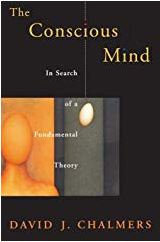
Chalmers prefers to distinguish his view as “naturalistic dualism.” He believes that mental states are caused by physical systems (i.e. the brain) and that mental states differentiate from and cannot be reduced to physical systems. His views align with a traditional expression such as property dualism. Property dualism is a position within the philosophy of mind that affirms that although the world is composed of only one kind of substance--the physical kind--there exist two different kinds of properties: mental properties and physical properties. Simply put, non-physical, mental properties-- such as emotions, desires, and beliefs--by nature supervene on or inhere in physical substances such as the brain. In contrast, substance dualism admits that there exist two structurally distinct kinds of properties, making it susceptible to the mind-body problem. Nonetheless, both property and substance dualism can agree in their opposition to reductive physicalism. Reductive physicalism is a doctrine stating that everything in the world can be reduced to its fundamental material, or physical basis. Chalmers famously declared his commitment to the logical, albeit unnatural, possibility of philosophical zombies. These aren't the zombies depicted in Hollywood movies, but complete physical replicas of humans deprived of qualitative experience. Chalmers' argument is reminiscent of Rene Descartes' philosophical proposition “I think, therefore I am,” where he claims that because said zombies are imaginable to us, they must be logically possible. If they are logically possible, then sentience and qualia--subjective, first-person experience--are not entirely defined by physical properties alone. The facts surrounding them are “further facts” that do not follow logically from the physical facts of the world. Chalmers offers the argument that consciousness is a foundational property that operates autonomously of any known, or possible, physical properties. He believes that what he labels “psychophysical laws” govern which physical systems affiliate with which types of qualia. Furthermore, he theorizes that all information systems have the ability to be conscious. This has led him to engage in the possibility of conscious thermostats, a view that aligns with panpsychism. According to the Stanford Encyclopedia of Philosophy, panpsychism is defined as “the view that mentality is fundamental and ubiquitous in the natural world.” Essentially, everything that is material, no matter how small, has an element of individual consciousness. Panpsychism offers an appealing midway position between dualism and physicalism. Although physicalism provides a unified and uncomplicated depiction of the world it potentially comes at the cost of an unsatisfactory account for the inception of human consciousness. On the other hand, dualism “leaves us with a radically disunified picture of nature and the deep difficulty of understanding how mind and brain interact.” Ultimately, panpsychism offers a potentially satisfying account of the human mind within a unified conception of nature. This worldview has a long history in Western and Eastern philosophical traditions. Panpsychism's popularity peaked during the 19th century where it was widely accepted as the default theory in philosophy of mind. Its inevitable decline arrived during the mid-20th century, but the recent interest in the hard problem of consciousness has revived interest in it. All in all, we cannot define the subjective experience that is consciousness and all questions of consciousness are tied to this sense of subjective experience. This leads Chalmers to raise the following questions: What is the relationship between consciousness and the physical universe? And can consciousness be explained in terms of the brain? Chalmers asserts that classical processes don't explain consciousness. This dilemma gives rise to his formulation of the hard problem of consciousness and his distinction between easy (cognitive) problems and the hard (phenomenal) problem. He went as far as to distinguish the hard problem as “the number one unanswered scientific challenge of our time,” during an appearance at the Australasian Association of Philosophy. In his own words, how does the water of the brain turn into the wine of consciousness? Brains do not appear particularly remarkable, which makes the fact that they are even more exceptional. As scientist Lyall Watson once said, “If the brain were so simple, we could understand it, we would be so simple that we couldn't.” Further Reading1. The Character of Consciousness, Oxford University Press, USA; 1 edition (October 28, 2010) 2. Constructing the World, Oxford University Press, Usa; Reprint edition (January 26, 2014) 3. Philosophy of Mind: Classical and Contemporary Readings, Oxford University Press; 1 edition (July 25, 2002) 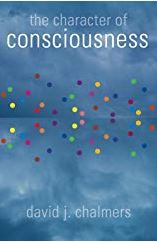 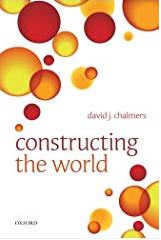 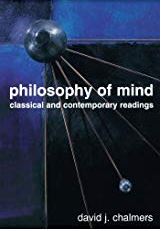 MSAC PHILOSOPHY GROUP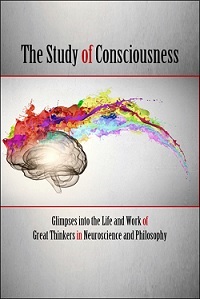
Human interest in the nature of consciousness dates far back to our ancestral past. However, it is only in the last century or so that researchers and philosophers have been able to tackle the problem in a more scientific way. This is primarily due to our increasing understanding of human physiology and how our brain functions. With the advent of ever more sophisticated technology—from fMRI scans, functional magnetic resonance imaging, to DARPA's neural engineering program, understanding neural “dust”—we are now able to not only create vivid simulations of cerebral activity but also to systematically reverse engineer the brain. Whether such empirical observations will unlock the secrets of self-reflective awareness is still open to vigorous debate. Nevertheless, the study of consciousness is now considered to be of elemental importance and has invited a large number of brilliant thinkers— from a wide range of disciplines, including mathematicians, quantum physicists, neuroscientists, and philosophers—to join in the discussions and offer their own contributions. The following essays briefly explore the life and work of pioneers in the field of consciousness studies. Included in this eclectic mix are such notables as Giulio Tononi (University of Wisconsin), Paul and Patricia Churchland (University of California, San Diego), Noam Chomsky (M.I.T.), the late Timothy Leary and Terence McKenna, and Jean Pierre Changeux (Collége de France) among others.
Comment Form is loading comments...
|